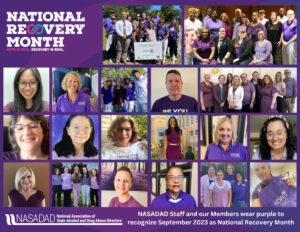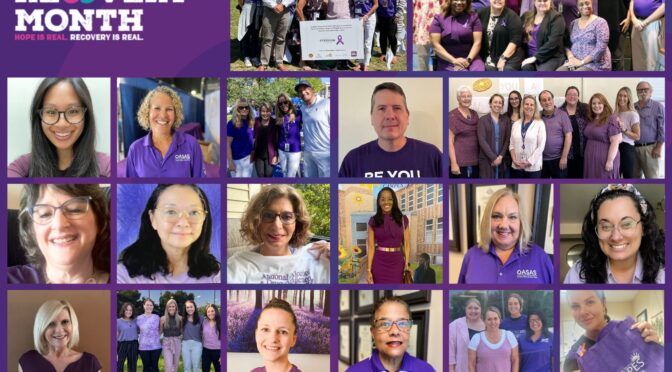Today, NASADAD releases an updated brief on An Overview of the Synar Provision in light of recent federal actions related to Synar. This updated brief includes the history of Synar, the impact of Tobacco 21 legislation, and the most recent federal actions. This brief will continue to be a “living document” that tells the story of Synar/Tobacco 21.
Category Archives: News
News
NASADAD EXECUTIVE DIRECTOR SERVES AS A PANELIST BEFORE NATIONAL ACADEMIES REGARDING SUBSTANCE USE DISORDER PREVENTION INFRASTRUCTURE
On Thursday, January 25, NASADAD Executive Director Robert Morrison served as a speaker during a meeting held by the National Academies of Sciences, Engineering, and Medicine (NASEM) as NASEM has been charged with the drafting of a “…a blueprint, including specific, actionable steps for building and sustaining an infrastructure for delivering prevention interventions targeting risk factors…” for mental health and substance use disorders (SUD). The Blueprint, when completed, is set to include best practices for creating a sustainable prevention infrastructure; funding needs and strategies; specific research gaps germane to the widespread adoption of evidence-based prevention interventions; and actionable recommendations.
Morrison spoke of the current role State alcohol and drug agencies play in managing the SUD prevention system and the infrastructure States utilize to support programs and manage prevention work. NASADAD then observed that the SUD prevention sector is severely underfunded at both the State and federal levels – reviewing, for example, the budget for Substance Abuse and Mental Health Services Administration’s (SAMHSA) Center for Substance Abuse Prevention (CSAP) in 2003 was approximately $200 million and the budget today – 20 years later – is $236 million. An effort to bolster our prevention infrastructure is welcome and sorely needed given the lack of funding. NASADAD suggested that the Blueprint should leverage current State and federal structures – including State alcohol and drug agencies and SAMHSA/CSAP – as opposed to creating entirely new entities at the State and federal levels.
A recording of the presentation and more details about NASEM’s project can be found here.
NASADAD Releases Updated Fact Sheet on Methamphetamine
Today, NASADAD releases an updated fact sheet originally released in 2015 that provides an overview of the landscape of methamphetamine use in the United States. This updated fact sheet provides current data on trends in use and admissions to treatment, the effects/risks of methamphetamine use, effective treatment services, and the role of key federal programs and agencies in addressing issues related to methamphetamine use.
Letter Supporting Addressing Addiction After Disasters Act
On Thursday, September 21, Representatives Becca Balint (D-VT-at large) and Jill Tokuda (D-HI-2) introduced H.R.5623, the “Addressing Addiction After Disasters Act.” The legislation would amend Section 416 of the Robert T. Stafford Disaster Relief and Emergency Assistance Act by explicitly adding substance use disorders to the portion of the statute that governs the Federal Emergency Management Agency’s (FEMA) Crisis Counseling Training and Assistance Program (CCP). Through an interagency agreement, the Substance Abuse and Mental Health Services Administration’s (SAMHSA) Center for Mental Health Services (CMHS) provides consultation, technical assistance, and training of personnel for the CCP program. CCP grants are released after a presidential declaration to support time-limited outreach, identification, short-term counseling, referrals, and other activities to those impacted by disasters. The bill is cosponsored by Representatives Doug LaMalfa (R-CA-1), Barbara Lee (D-CA-12), Ann Kuster (D-NH-2), and Jim Costa (D-CA-21).
NASADAD has a long history of working to promote awareness of substance use disorder considerations during a disaster. This work stems from the experiences of the September 11th attacks and Hurricanes Katrina and Rita. NASADAD initially released a Policy Brief on the topic in 2005 and issued an updated version in 2020. NASADAD sent a letter to Reps. Balint and Tokuda expressing appreciation for their leadership on H.R. 5623.
NASADAD’s most recent issue brief can be accessed here.
NASADAD/National Council for Mental Wellbeing Release Brief on Integrating Peer Support Services Into Substance Use-Related Crisis Care
Through the Substance Abuse and Mental Health Services Administration’s (SAMHSA) Center of Excellence for Integrated Health Solutions (CoE), NASADAD, in collaboration with the National Council for Mental Wellbeing, developed an issue brief on Integrating Peer Support Services Into Substance Use-related Crisis Care. A substance use disorder peer recovery specialist is a trained professional who has knowledge and experience in the recovery process and helps others in similar situations. Peers are a critical component of the crisis continuum, providing empathy and connection during a crisis event, offering support and services during crisis care and referring to treatment and recovery support service after crisis care.
This brief highlights three state initiatives that have integrated peer recovery support services (PRSS) as part of their crisis response to help individuals experiencing substance use-related crises or overdoses. These examples illustrate how PRSS can be effectively integrated using a team-based approach to care and demonstrate how the personal experience and training of peers have shown positive results in referring and connecting individuals in crisis to needed care, preventing further crises and aiding individuals on their path to wellness.
NASADAD Releases Recovery Month Resolution
In celebration of National Recovery Month, NASADAD’s Board of Directors considered and approved a resolution in recognition of the value and importance of recovery support services for individuals with a substance use disorder (SUD). The resolution highlights the Association’s work around elevating recovery as a key component of the continuum and provides recent data on the prevalence of SUD and the impact of recovery services, the role that NASADAD members play in supporting recovery in the publicly funded SUD system, and a commitment to recognizing September 2023 as National Recovery Month.
NASADAD Releases Updated Fact Sheet on SAMHSA’s Pregnant and Postpartum Women’s (PPW) Residential Program and State Pilot Program
Today, NASADAD releases an updated fact sheet regarding the Substance Abuse and Mental Health Services’ (SAMHSA) Pregnant and Postpartum Women’s (PPW) Residential Program and State Pilot Program. The fact sheet “tells the story” of the PPW Residential Services program that has been housed within SAMHSA’s Center for Substance Abuse Treatment (CSAT) for a number of years. In addition, the brief reviews the evolution of the PPW State pilot program – an initiative first developed by Congress with NASADAD support as part of the Comprehensive Addiction and Recovery Act (CARA). The brief includes updated information describing outcomes data related to the PPW State Pilot Program; recent grantees; and recent action related to these programs moving in Congress.
NASADAD Recognizes September as Recovery Month
National Recovery Month is held each September to raise awareness and share the message that people do recover from substance use disorders. Recovery month has embraced the permanent theme of “Every person. Every family. Every Community.” Through this message, Recovery Month seeks to educate the public, stakeholders, and communities about addiction as a disease by sharing resources that elevate recovery practices and the effectiveness of treatment.
NASADAD’s members serve as the lead agency in each State or jurisdiction responsible for managing federal funds dedicated to addressing substance use prevention, treatment, and recovery. This month, our Members wear purple to celebrate recovery and promote awareness of substance use disorder issues. NASADAD is grateful for the work all of our members do in their States and jurisdictions to support recovery every day of the year.

Follow NASADAD on LinkedIn for updates from the Association.
